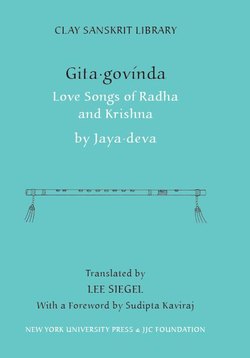Читать книгу Gita Govinda - Jayadeva - Страница 12
На сайте Литреса книга снята с продажи.
Оглавлениеdominant in the “Maha·bharata” story—although he is one of its least active figures. Drawing on another tradition embodied in the Puranas, Jaya·deva’s “Gita·govinda” instigates a fundamental transformation of this heroic figure into a different figure which is erotic and aesthetic. The story shifts in space from Kuru·kshetra and Dvaraka to Vrinda·vana, in biographical emphasis from his maturity to his adolescence, and in his character from a warrior and statesman, concerned with the order of the world, to a lover, concerned with an aesthetic enjoyment of the world. In a subtle expression of this change, he is now worshipped as madhur’/adhipati, “the sweet lord,” rather than Mathur’/adhipati, “the lord of Mathura,” the city where Krishna had slain the evil king Kansa; he has unrivaled dominion of all beautiful things. “Gita·govinda” is the great celebration of this transference in the narrative, the defining text which ensures that at least in some regions, the name of Krishna would be inextricably linked not to the grimly dark battlefields of Kuru· kshetra, but the blooming forest in full moon nights on the leafy banks of the Yamuna. Although the narrative connection with the Krishna of the “Maha·bharata” was retained, the “Gita·govinda” wrought the most astonishing transformation in the way devotees imagined godliness.
This is a text of a very different rasa, of a different rhetorical orientation towards the world. The “Maha·bharata,” on its most sophisticated readings, is meant to produce a drying up of desire (trsna/ksaya/sukha); the “Gita·govinda” is a celebration of desire, although as a great text it maintains a witty ambiguity regarding its meaning. An early invocation invites an ideal reader who should be someone whose mind ________
